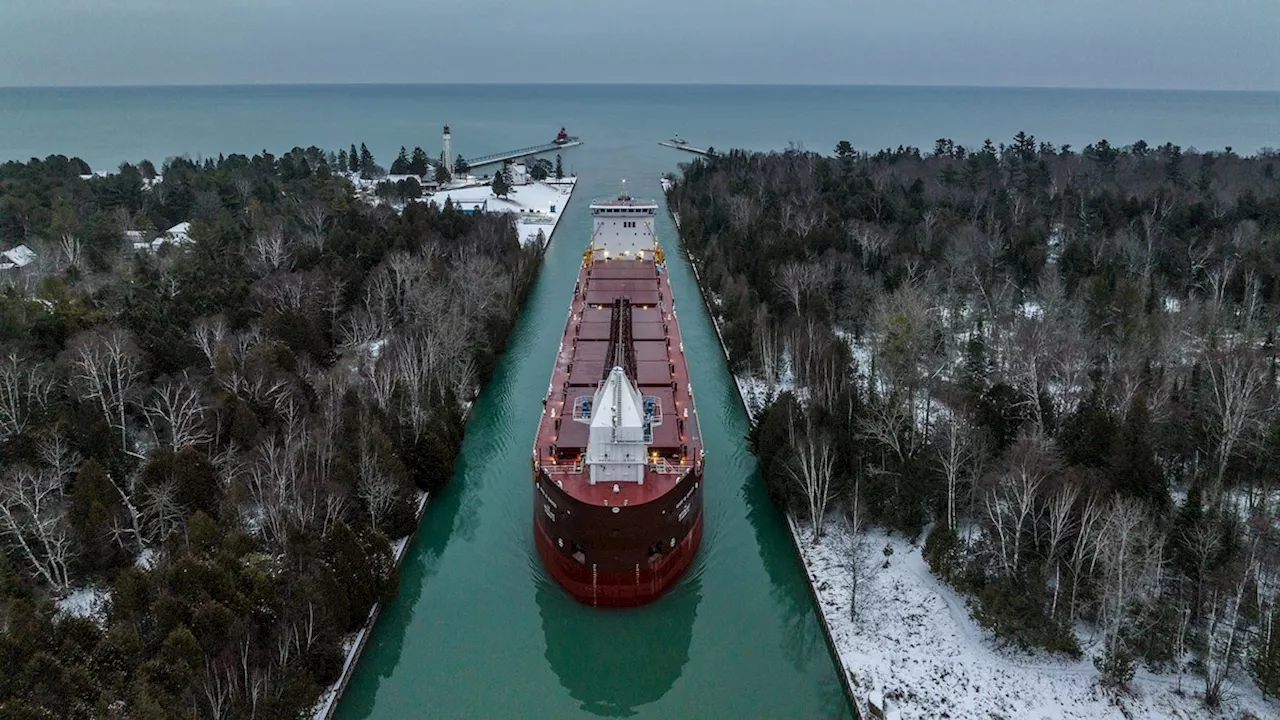In her research, Great Salt Lake scientist and advocate Jaimi Butler found it interesting that brine shrimp — or 'sea monkeys' — were sexualized in marketing cartoons in the 1970s.
Jaimi Butler standing in front of crowd at Cache Bar showing an old advertisement for " sea monkeys ."Jaimi Butler started her career as the only woman on a brine shrimp harvesting rig on Great Salt Lake . Butler has since made a name for herself as a Great Salt Lake scientist, an advocate, writer, and recently comedian.
After researching brine shrimp history, Butler found it interesting that brine shrimp or ‘sea monkeys,’ as they are more commonly known, were sexualized in marketing cartoons in the 1970s.“I started looking around and I found all of these interesting things where we were objectifying and sexualizing brine shrimp and their legs and brine shrimp don’t have legs,” Butler said. “And never once did I see anything about male brine shrimp having two penises.
Brine Shrimp Great Salt Lake Advertisements Sexualized 1970S
United States Latest News, United States Headlines
Similar News:You can also read news stories similar to this one that we have collected from other news sources.
 2024 Rev is Saturday with great fun, great food, great entertainment for a great causeFunds raised through the event go toward trauma and critical care programs and mental health services across the state.
2024 Rev is Saturday with great fun, great food, great entertainment for a great causeFunds raised through the event go toward trauma and critical care programs and mental health services across the state.
Read more »
 Image: Bolivian salt lakes from orbitThis Copernicus Sentinel-2 image features salt flats and lakes in southwest Bolivia, near the crest of the Andes Mountains.
Image: Bolivian salt lakes from orbitThis Copernicus Sentinel-2 image features salt flats and lakes in southwest Bolivia, near the crest of the Andes Mountains.
Read more »
 The surprising history and sexualization of Great Salt Lake's brine shrimpJaimi Butler started her career as the only woman on a brine shrimp harvesting rig on Great Salt Lake. Butler has since made a name for herself as a scientist, advocate, writer, and comedian.
The surprising history and sexualization of Great Salt Lake's brine shrimpJaimi Butler started her career as the only woman on a brine shrimp harvesting rig on Great Salt Lake. Butler has since made a name for herself as a scientist, advocate, writer, and comedian.
Read more »
 Are the Great Lakes the key to solving America’s emissions conundrum?A single cargo ship can carry enough goods to replace nearly 3,000 semi-trucks—that's why some are calling for a shipping boom in America's famous lakes.
Are the Great Lakes the key to solving America’s emissions conundrum?A single cargo ship can carry enough goods to replace nearly 3,000 semi-trucks—that's why some are calling for a shipping boom in America's famous lakes.
Read more »
 'Forever chemicals' found to rain down on all five Great LakesPerfluoroalkyl and polyfluoroalkyl substances, also known as PFAS or 'forever chemicals,' have become persistent pollutants in the air, water and soil. Because they are so stable, they can be transported throughout the water cycle, making their way into drinking water sources and precipitation.
'Forever chemicals' found to rain down on all five Great LakesPerfluoroalkyl and polyfluoroalkyl substances, also known as PFAS or 'forever chemicals,' have become persistent pollutants in the air, water and soil. Because they are so stable, they can be transported throughout the water cycle, making their way into drinking water sources and precipitation.
Read more »
 'Forever chemicals' found to rain down on all five Great LakesPerfluoroalkyl and polyfluoroalkyl substances, also known as PFAS or 'forever chemicals,' have become persistent pollutants in the air, water and soil. Because they are so stable, they can be transported throughout the water cycle, making their way into drinking water sources and precipitation.
'Forever chemicals' found to rain down on all five Great LakesPerfluoroalkyl and polyfluoroalkyl substances, also known as PFAS or 'forever chemicals,' have become persistent pollutants in the air, water and soil. Because they are so stable, they can be transported throughout the water cycle, making their way into drinking water sources and precipitation.
Read more »
